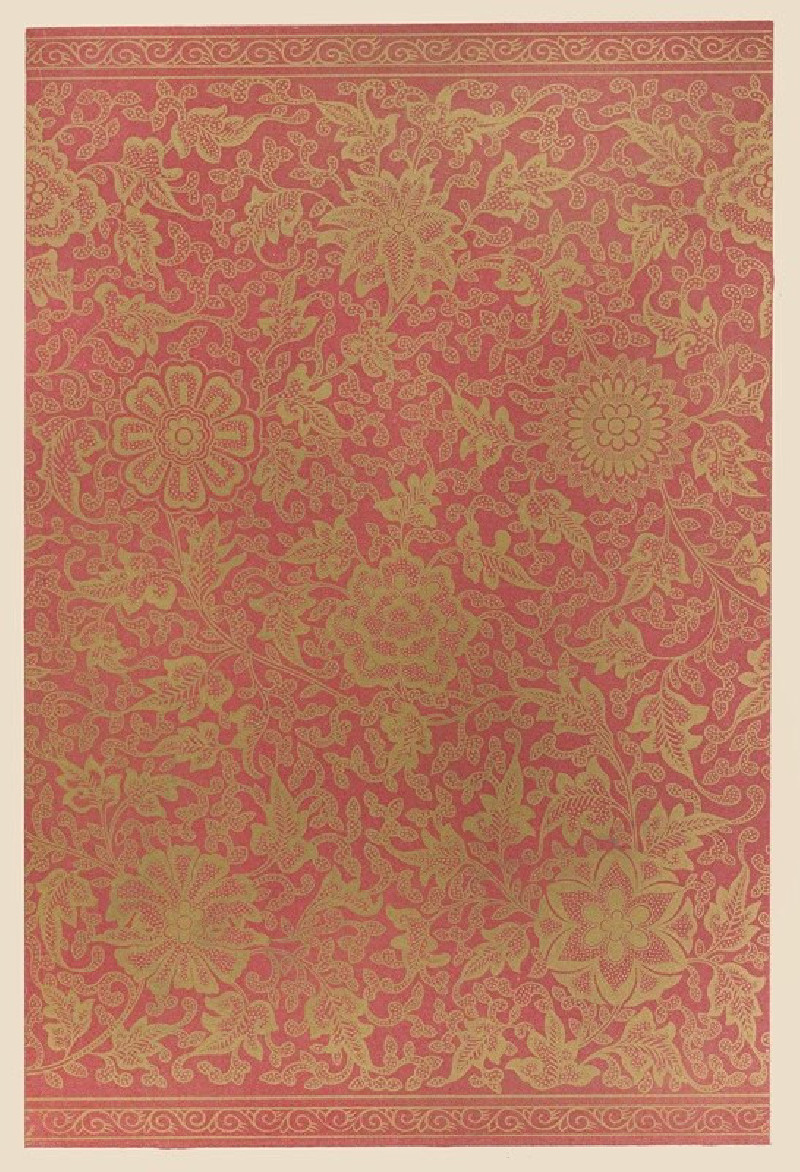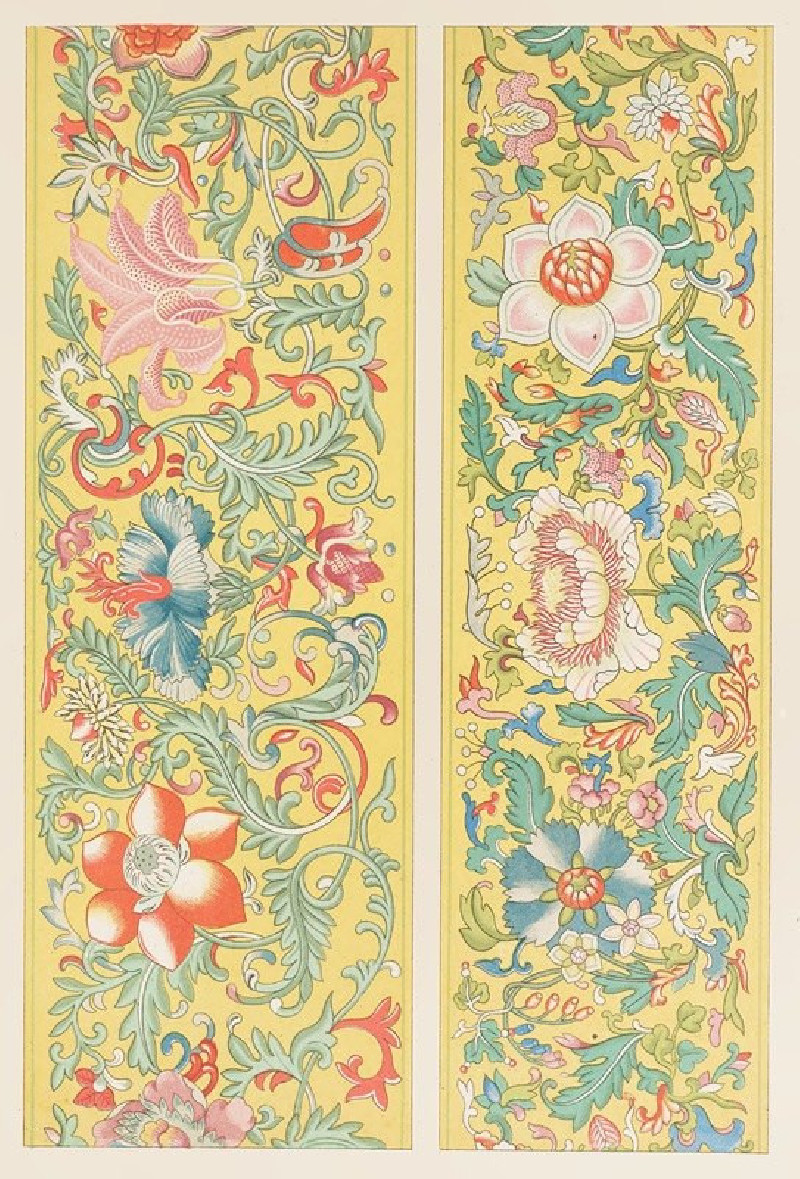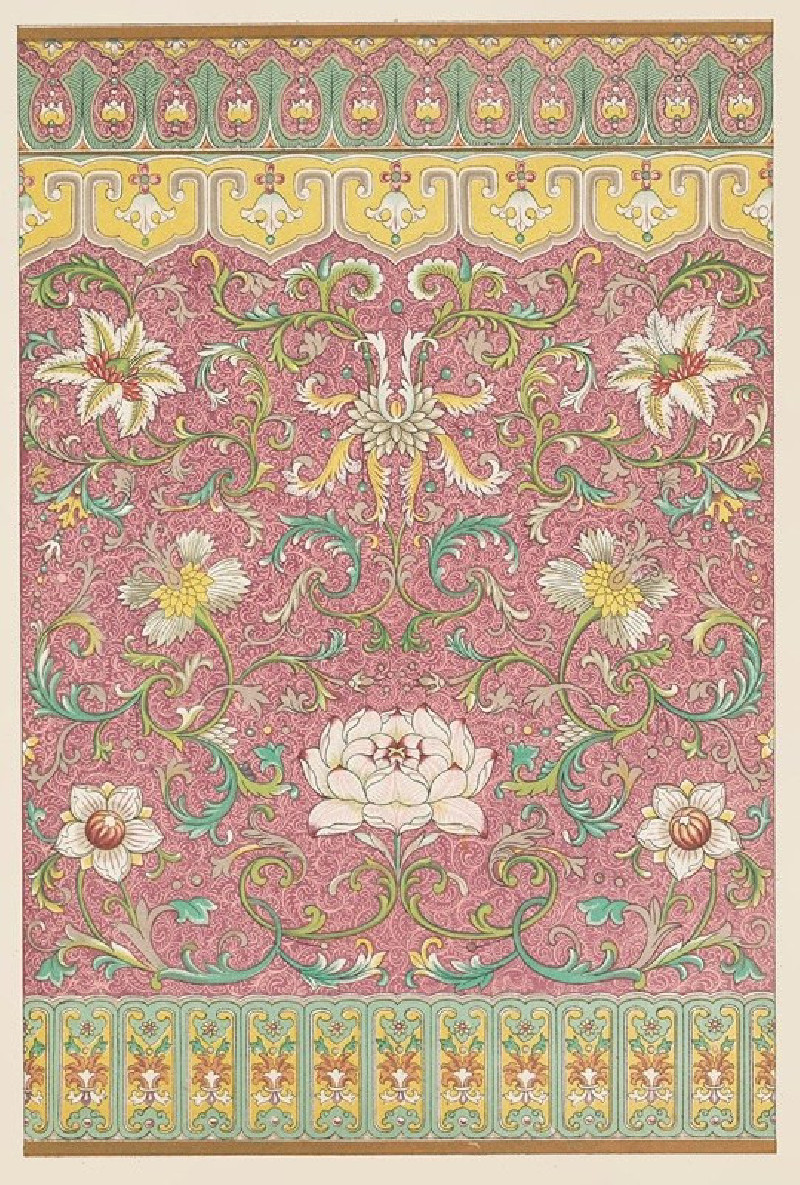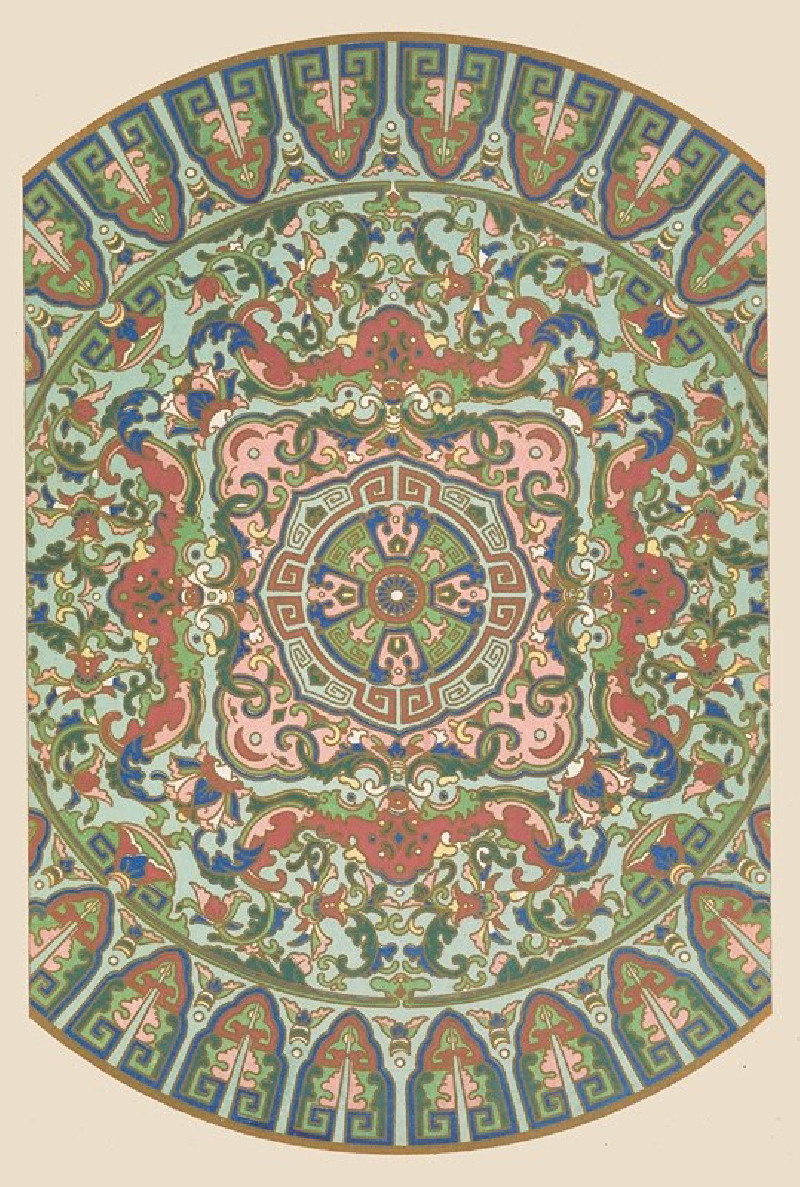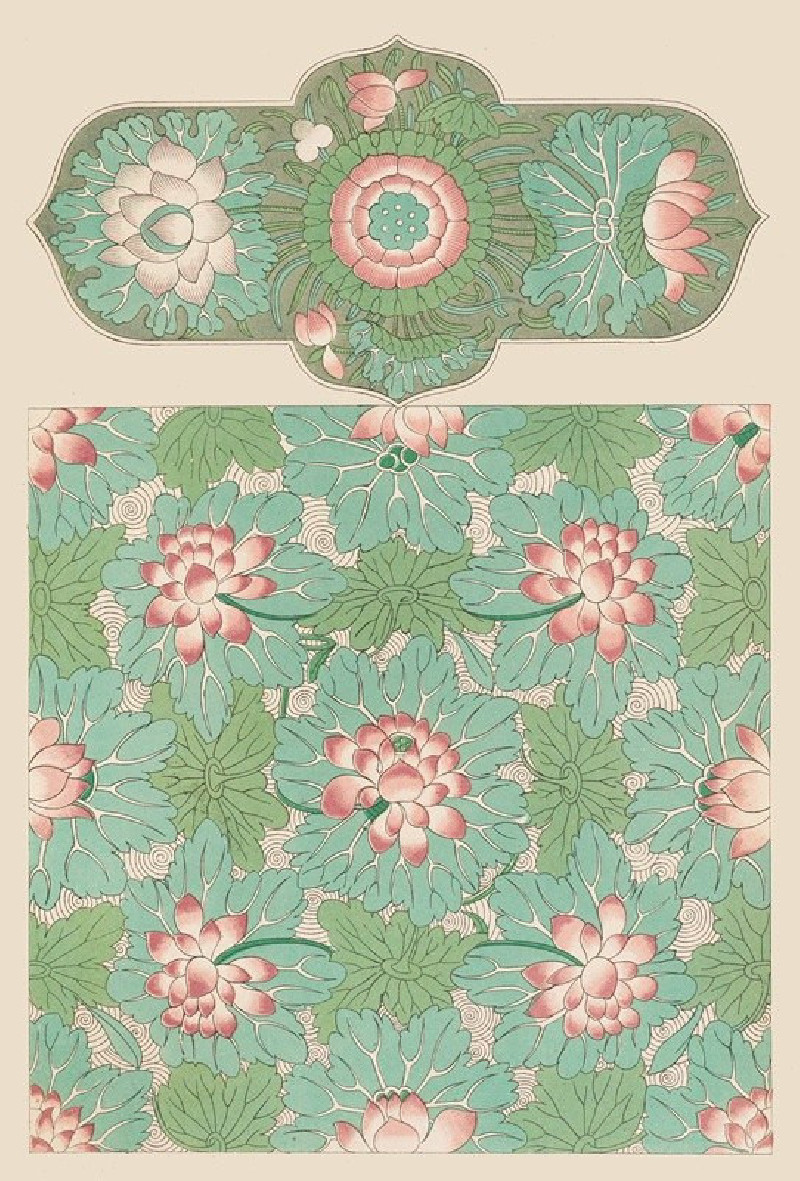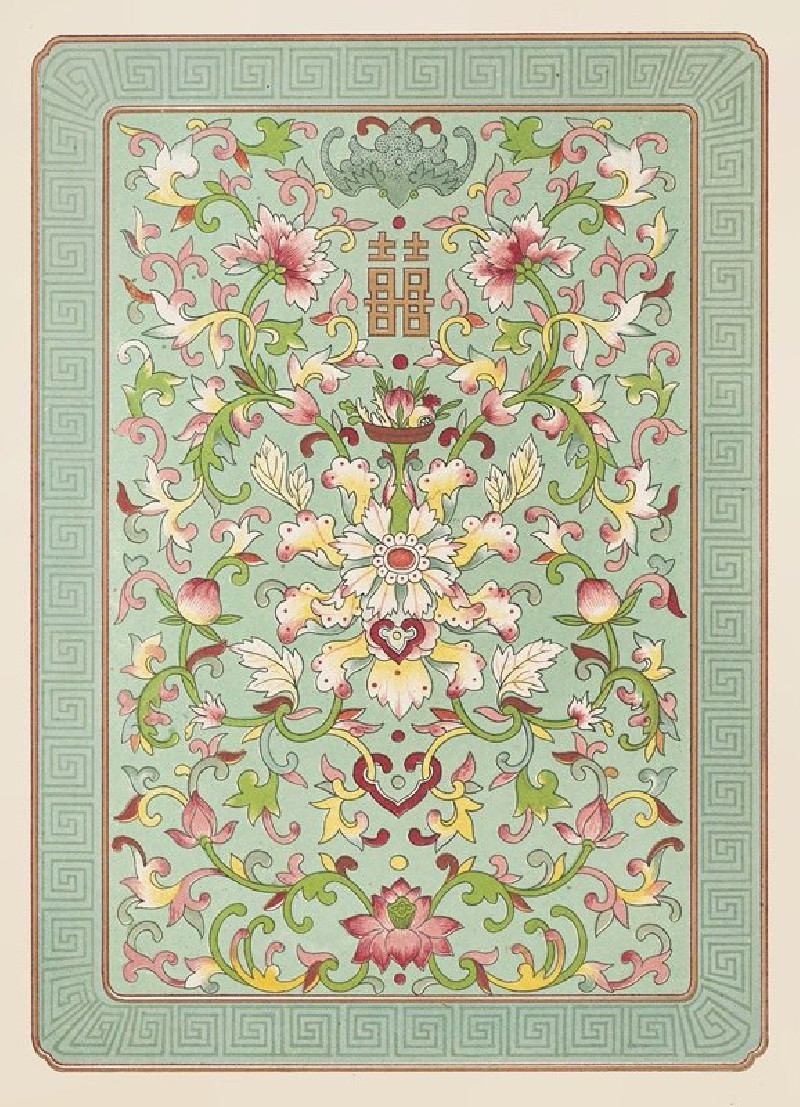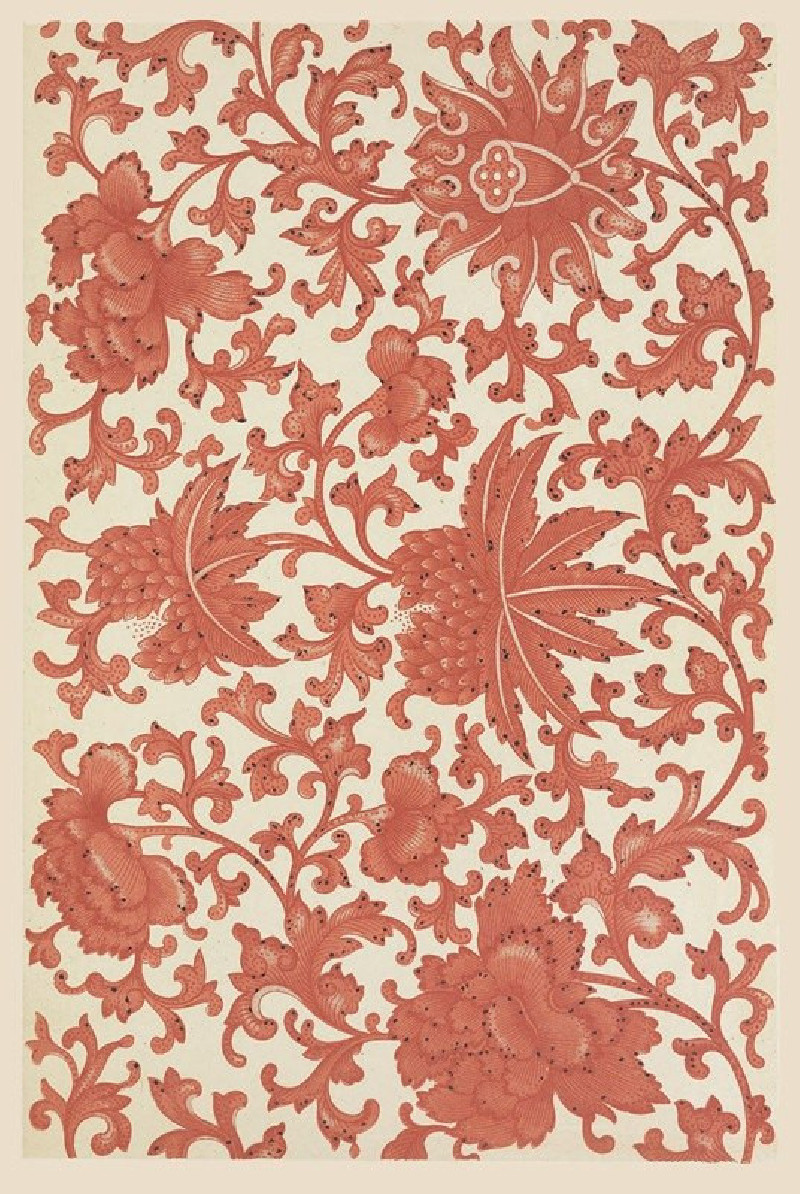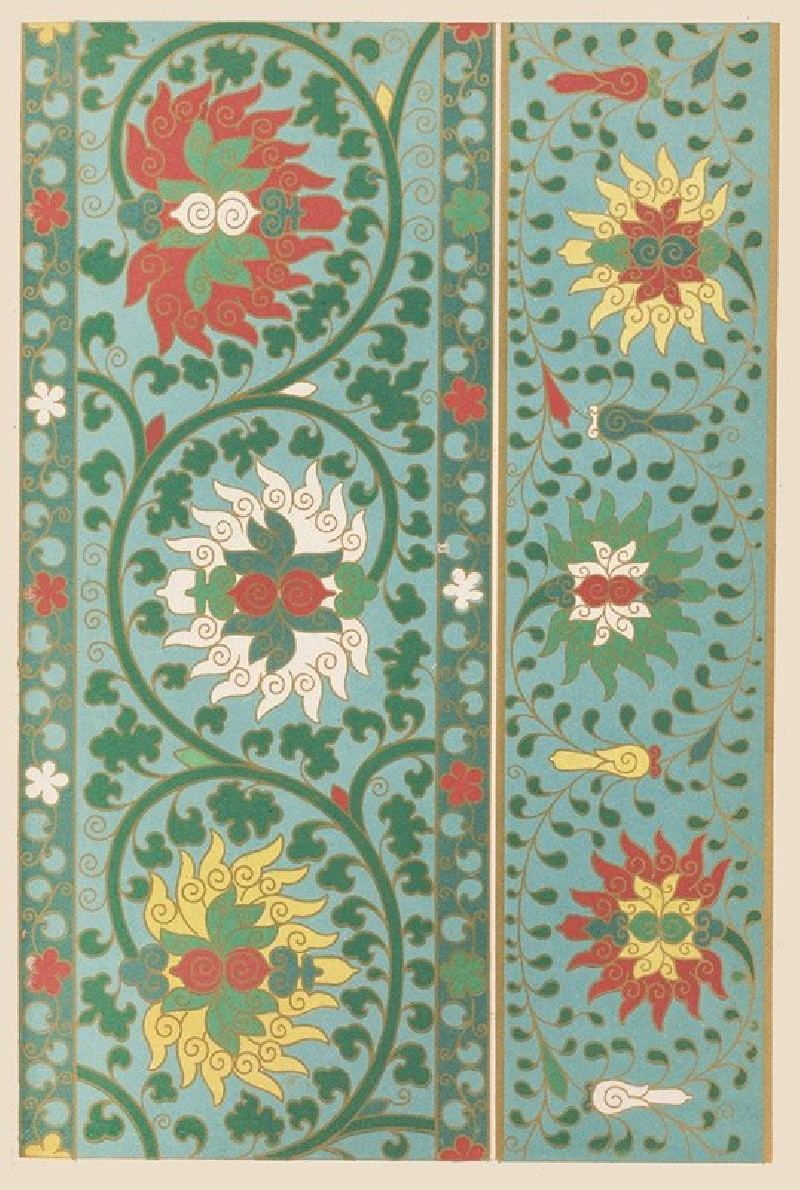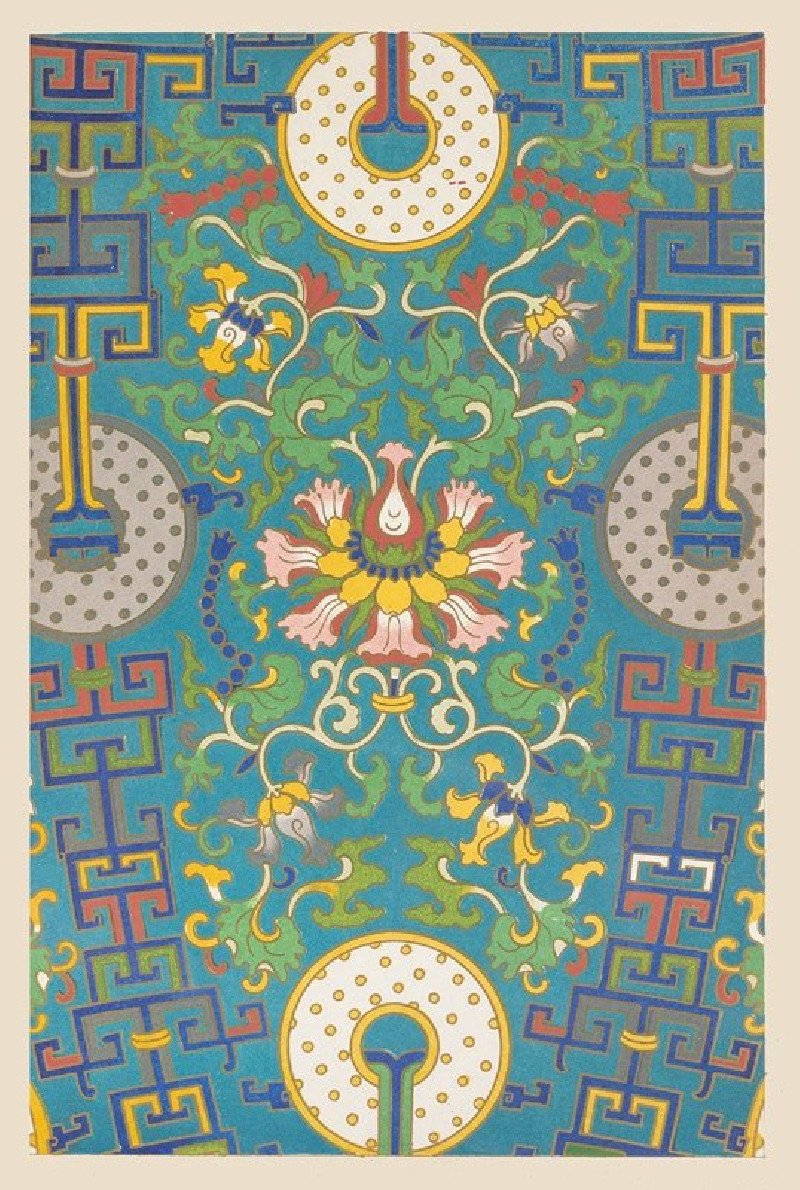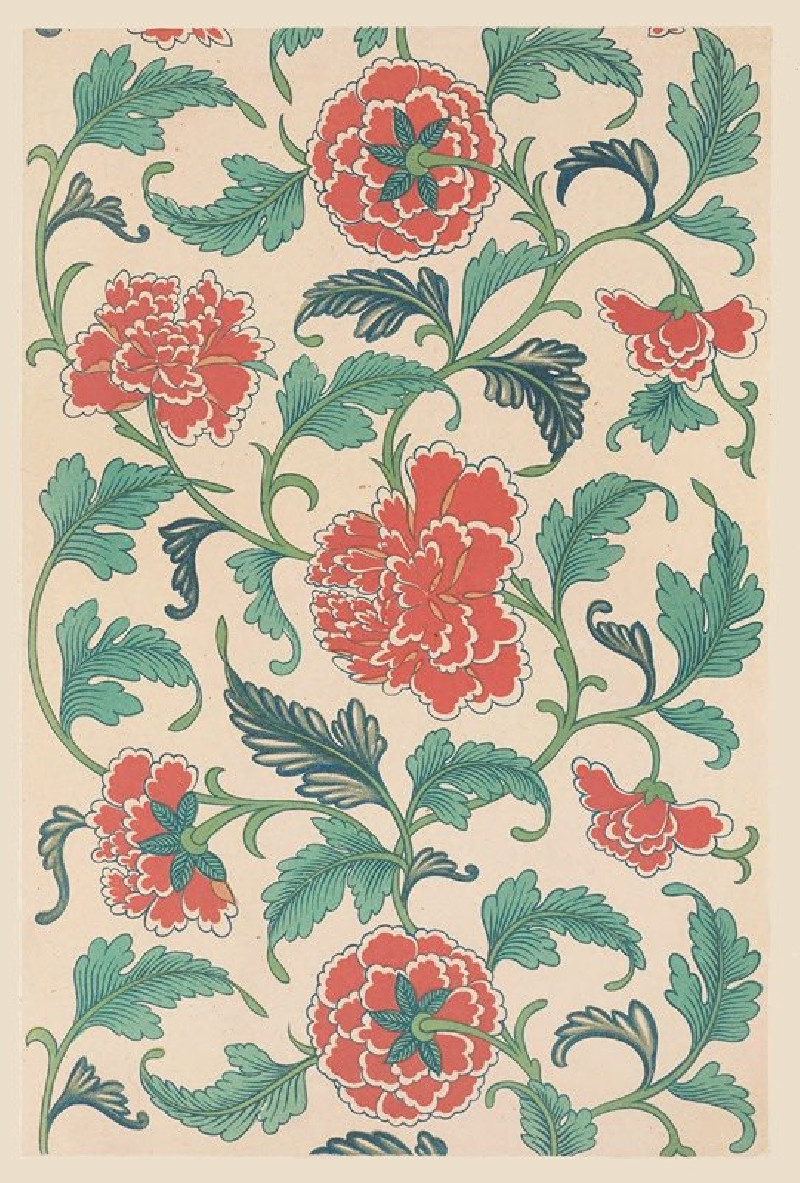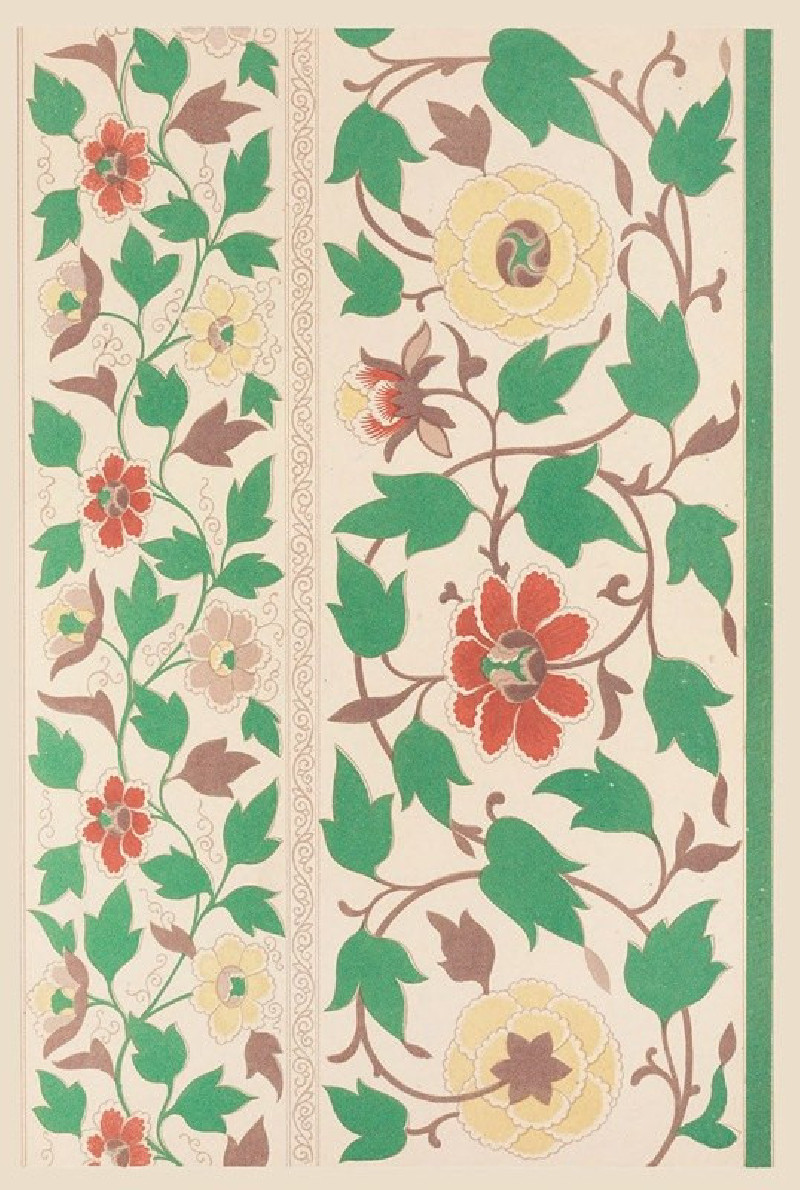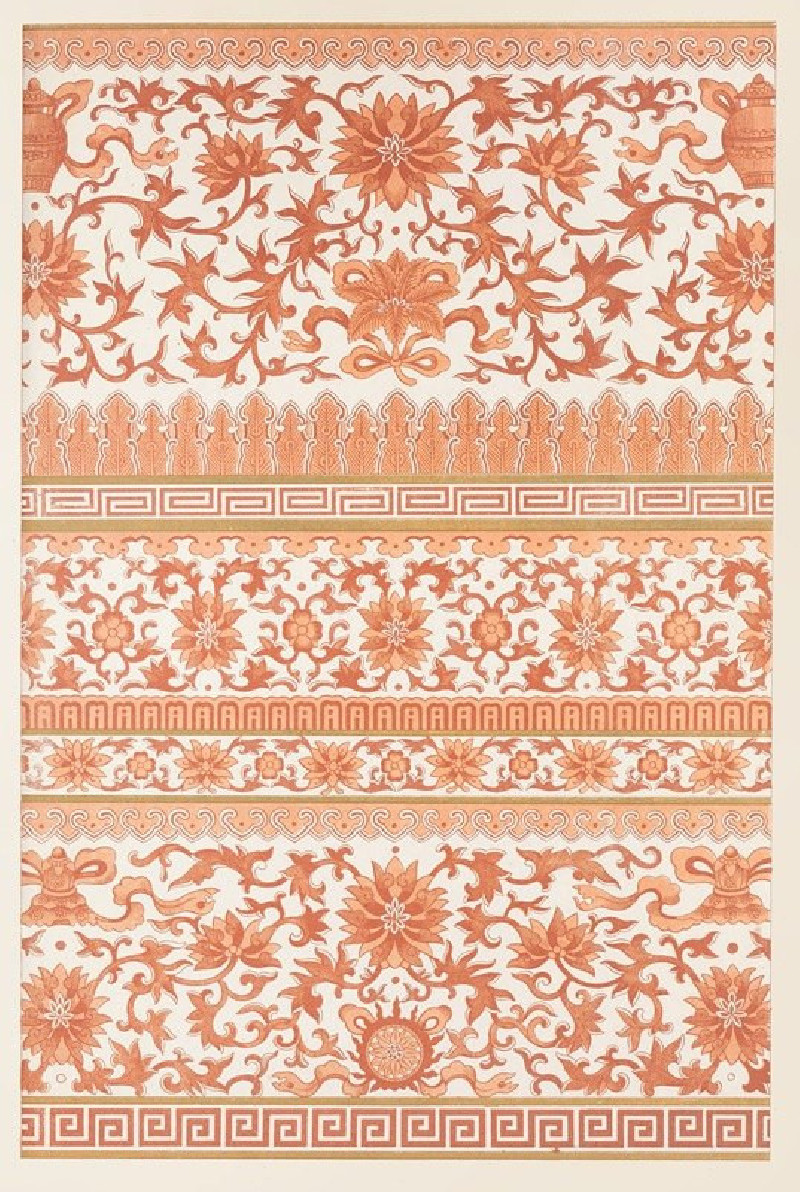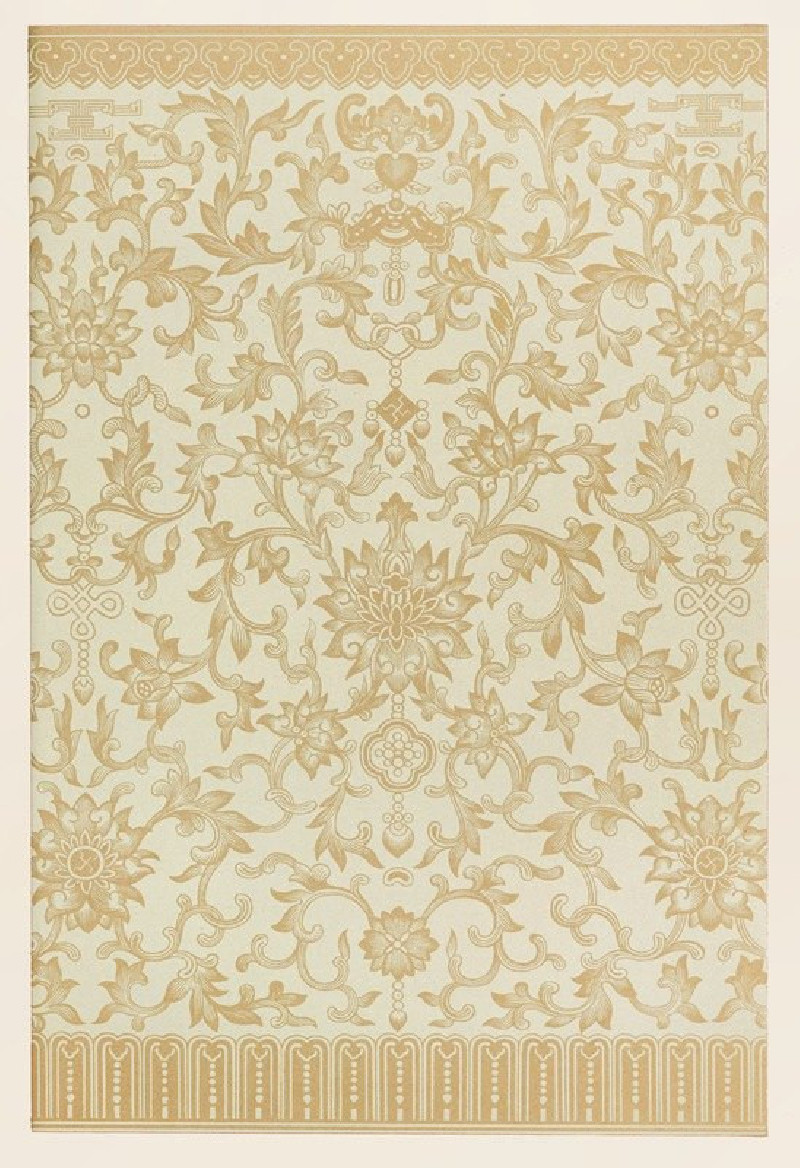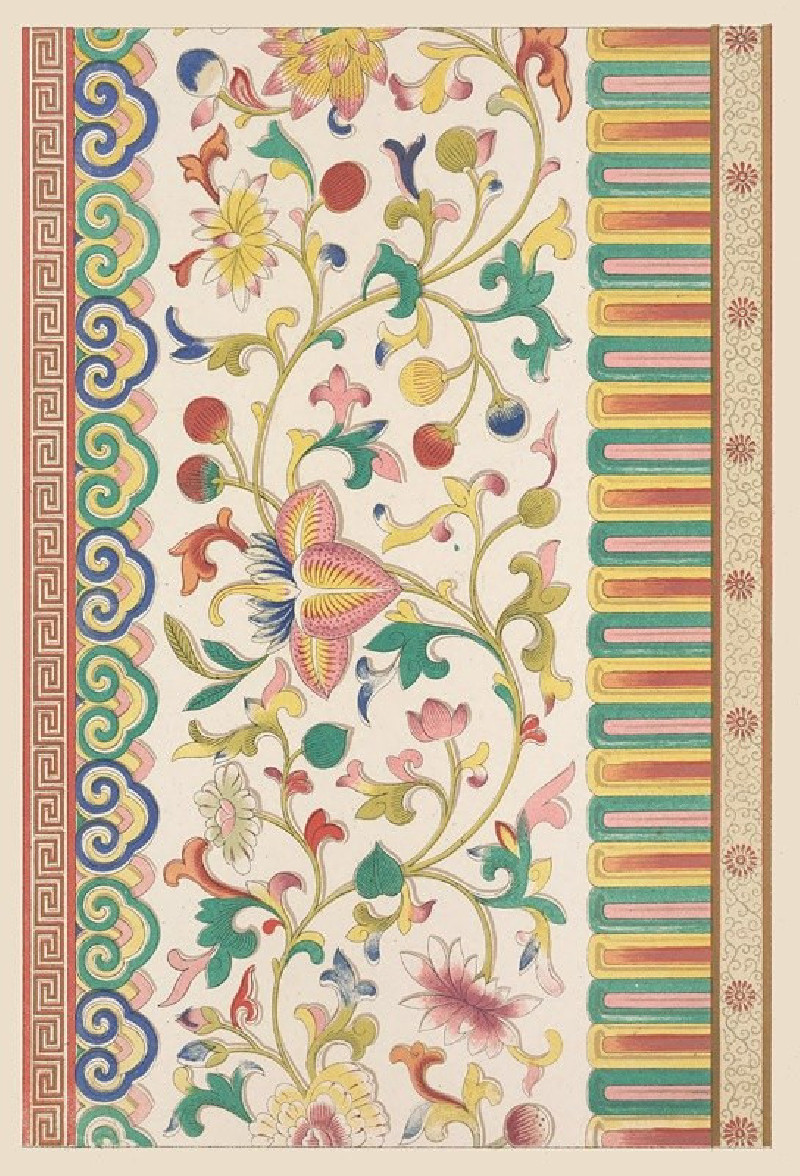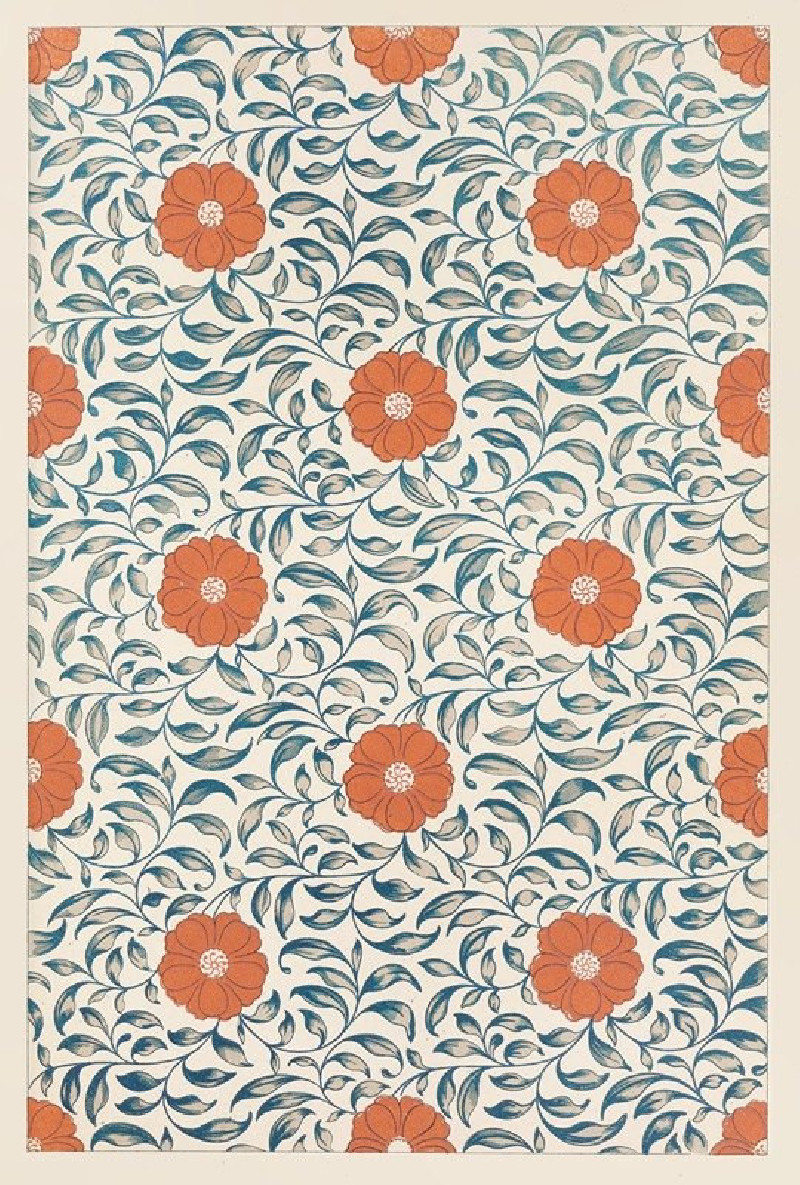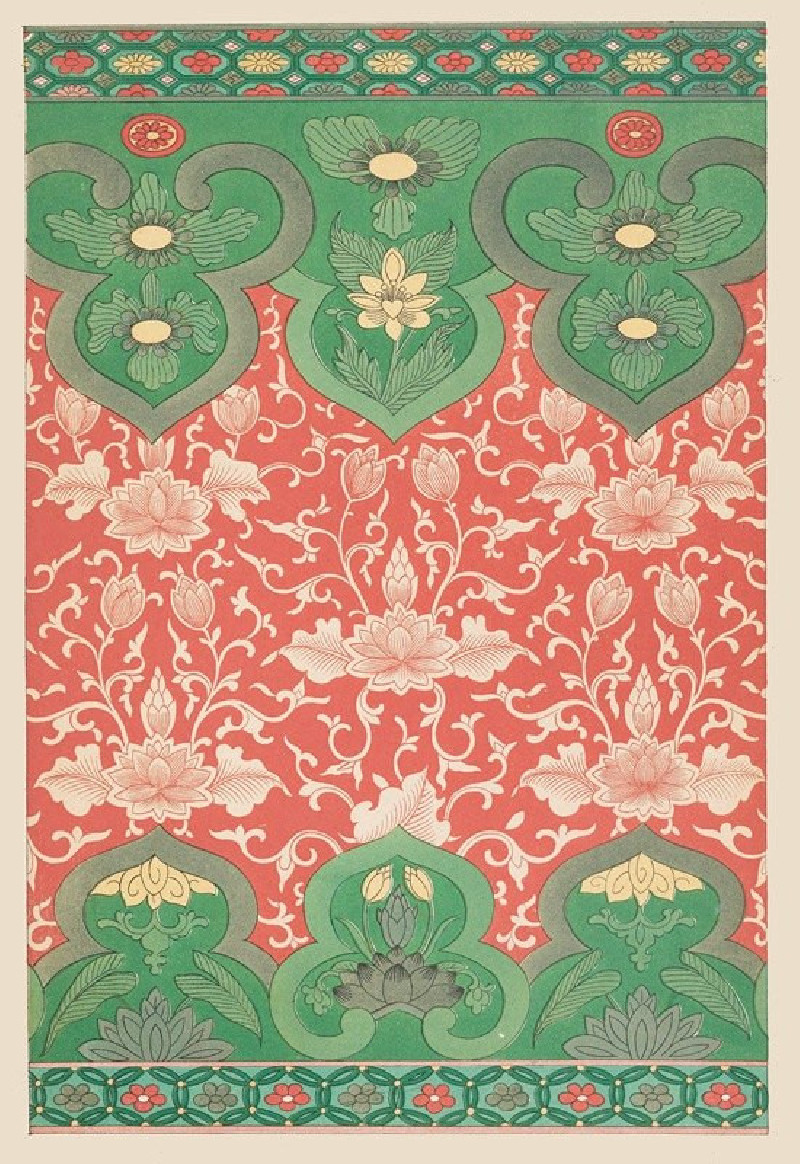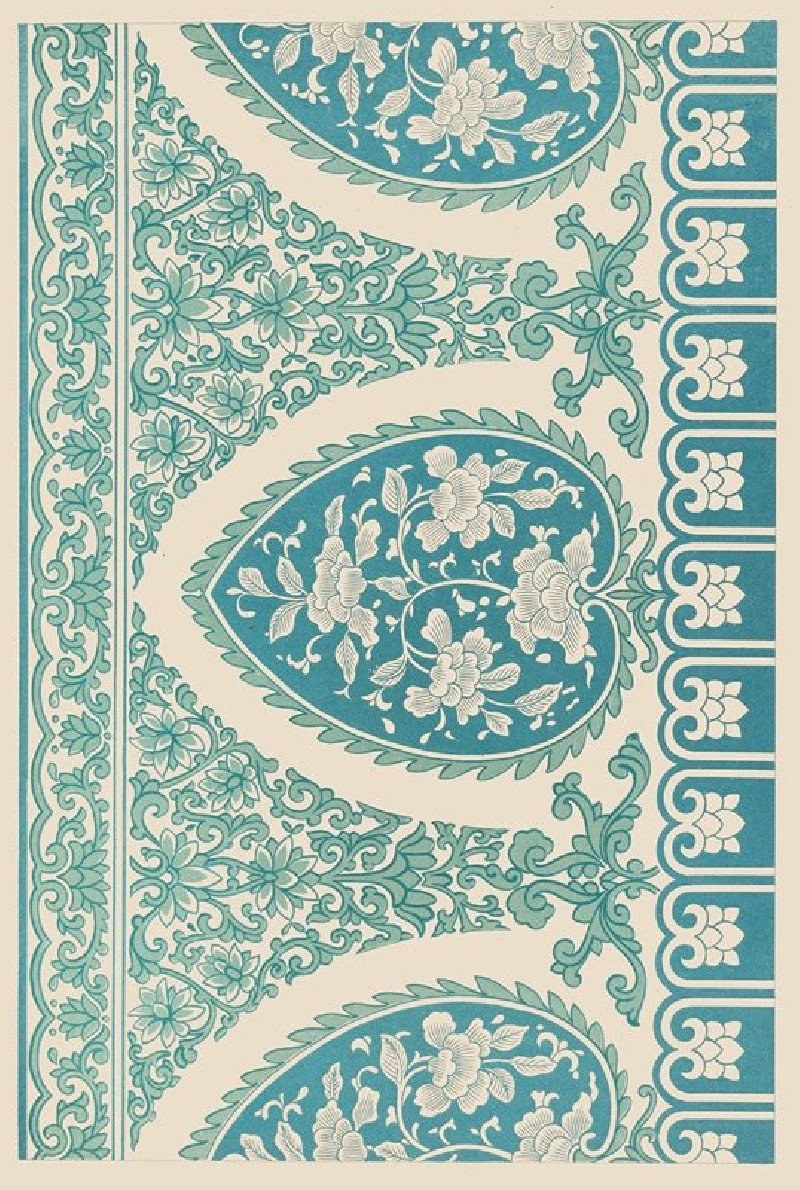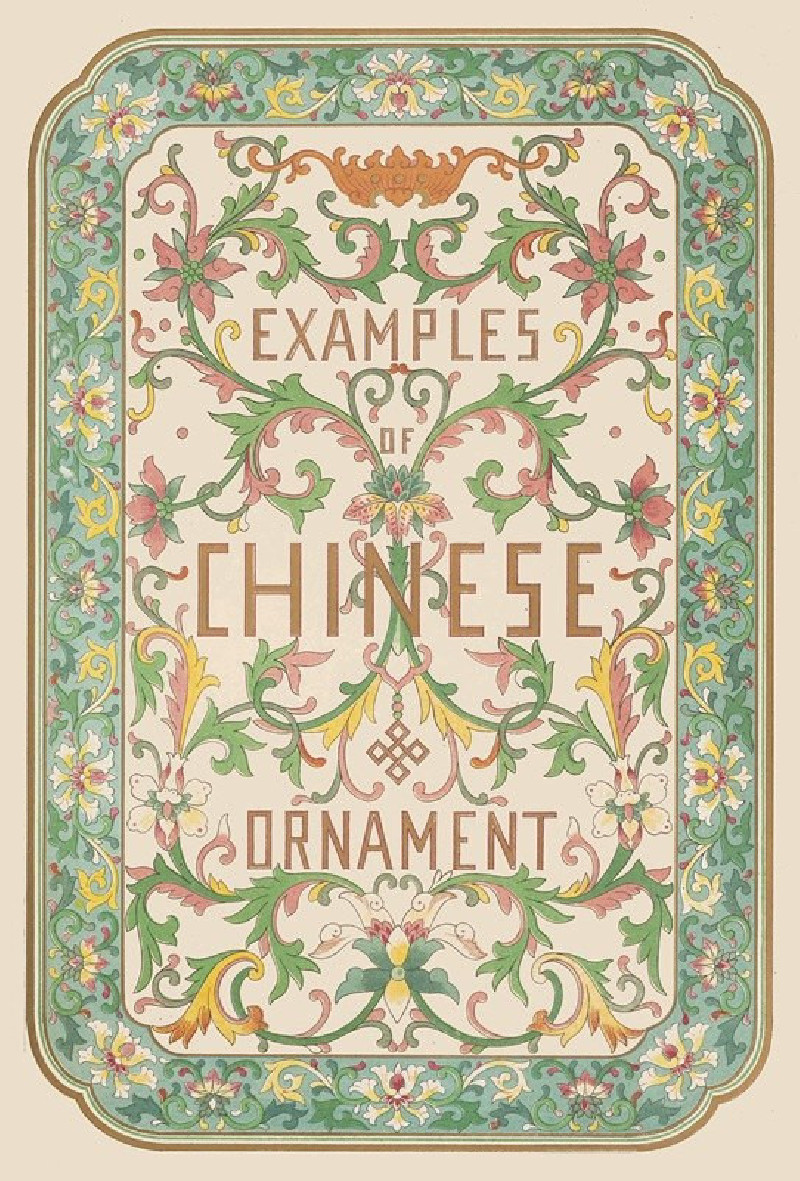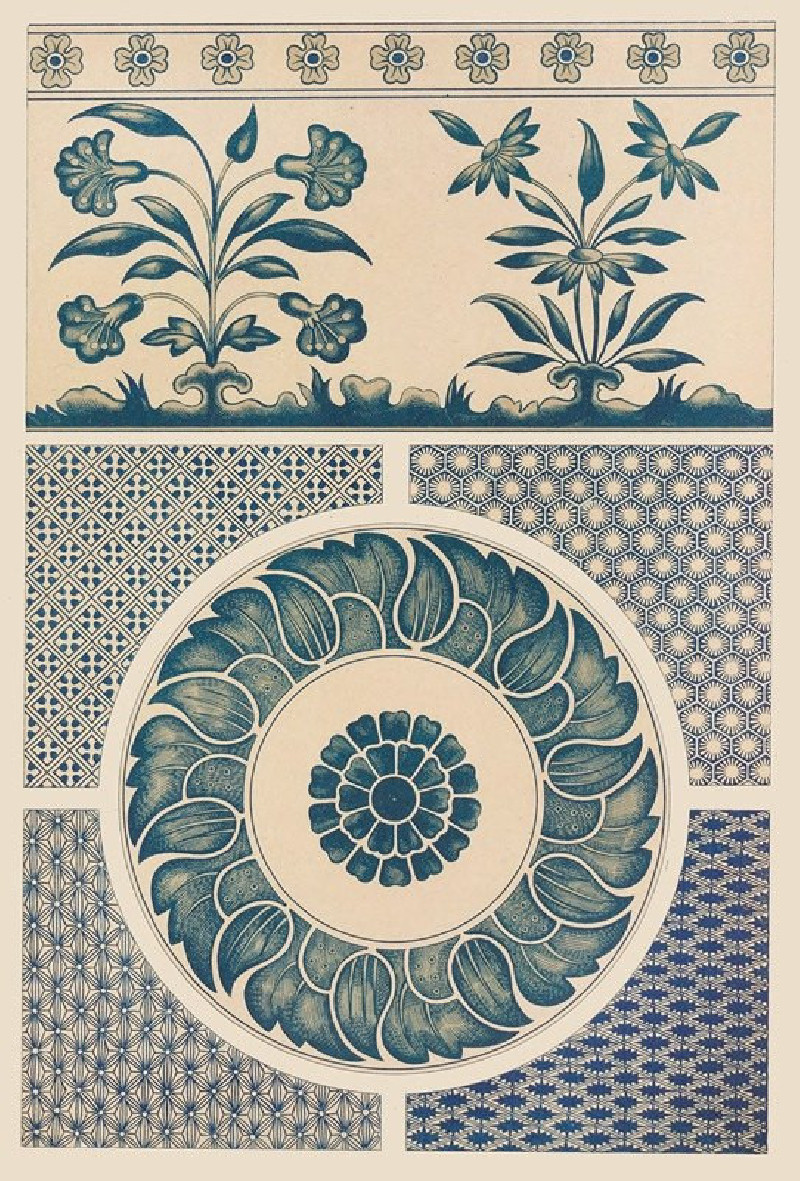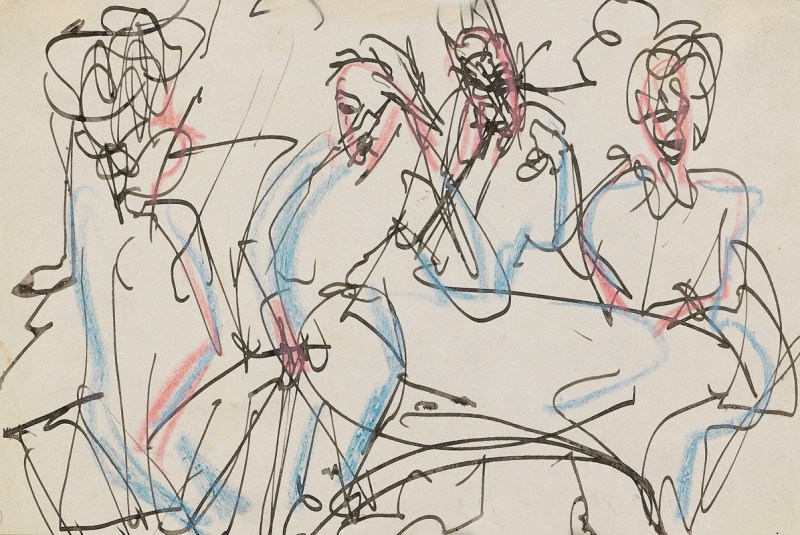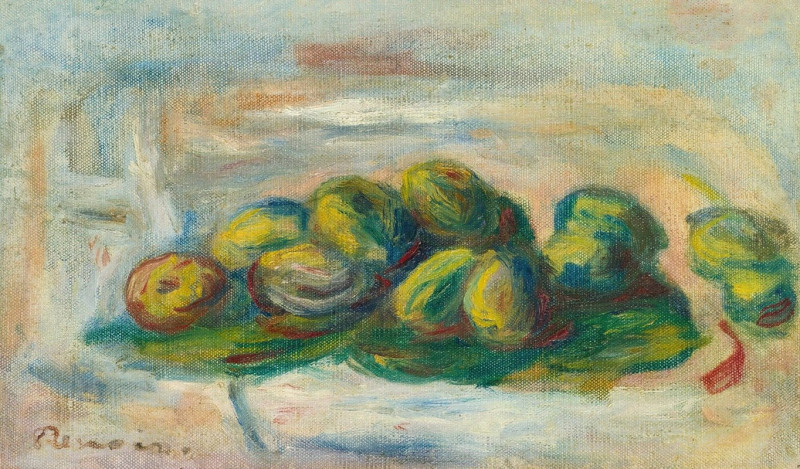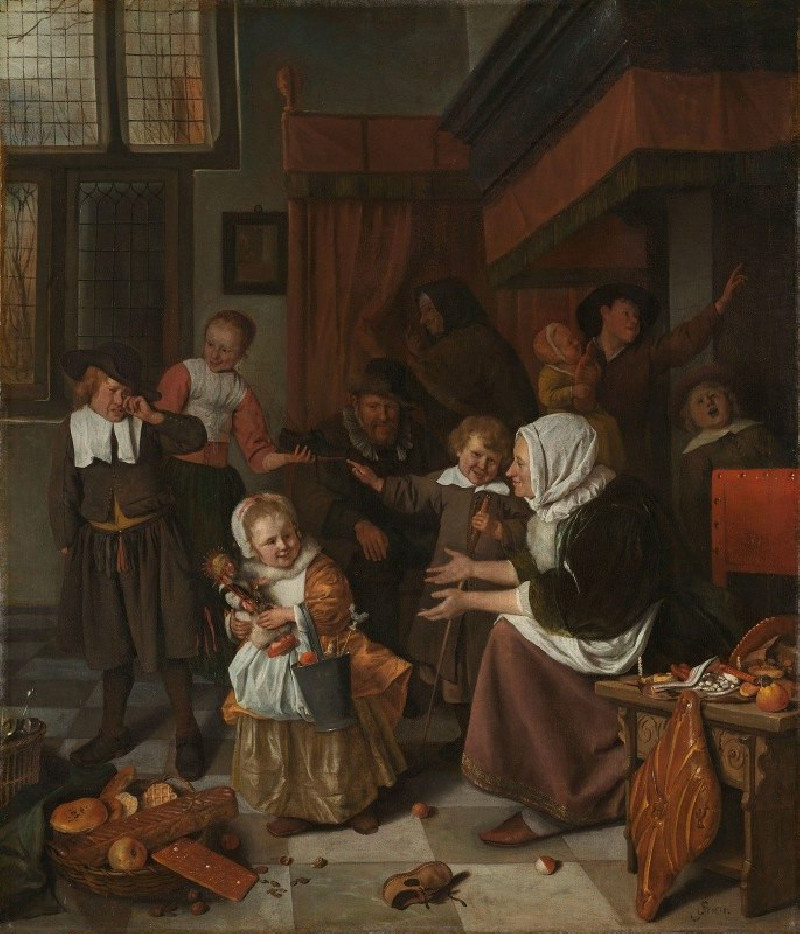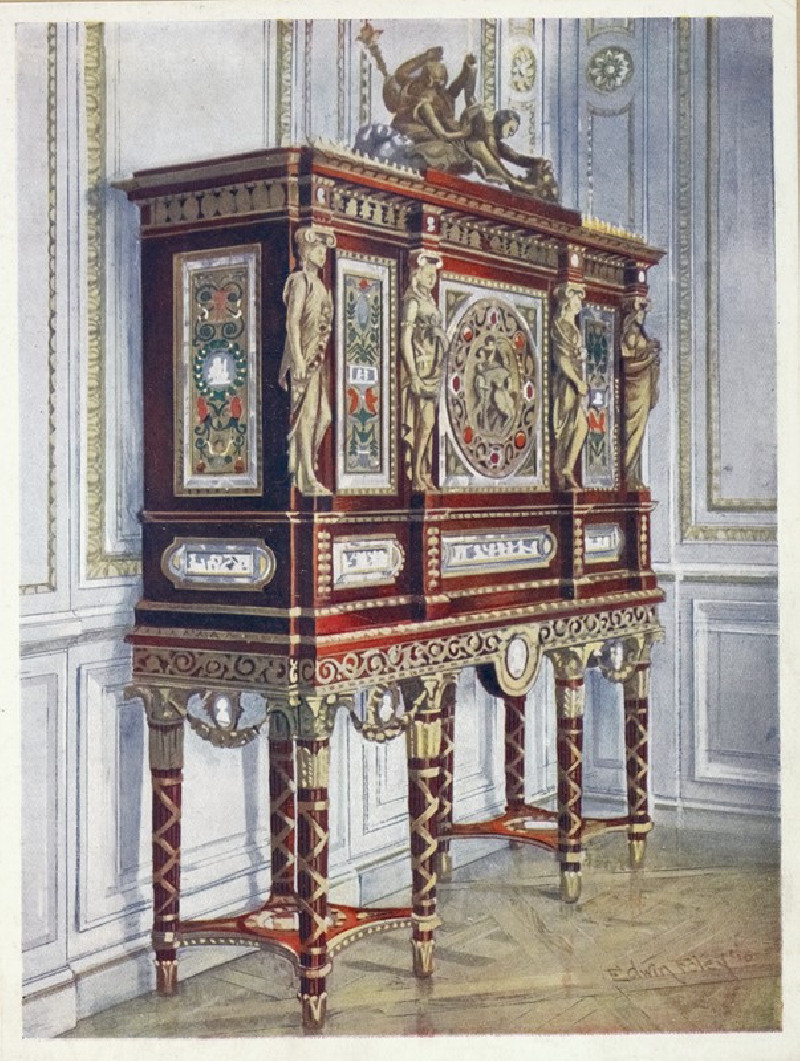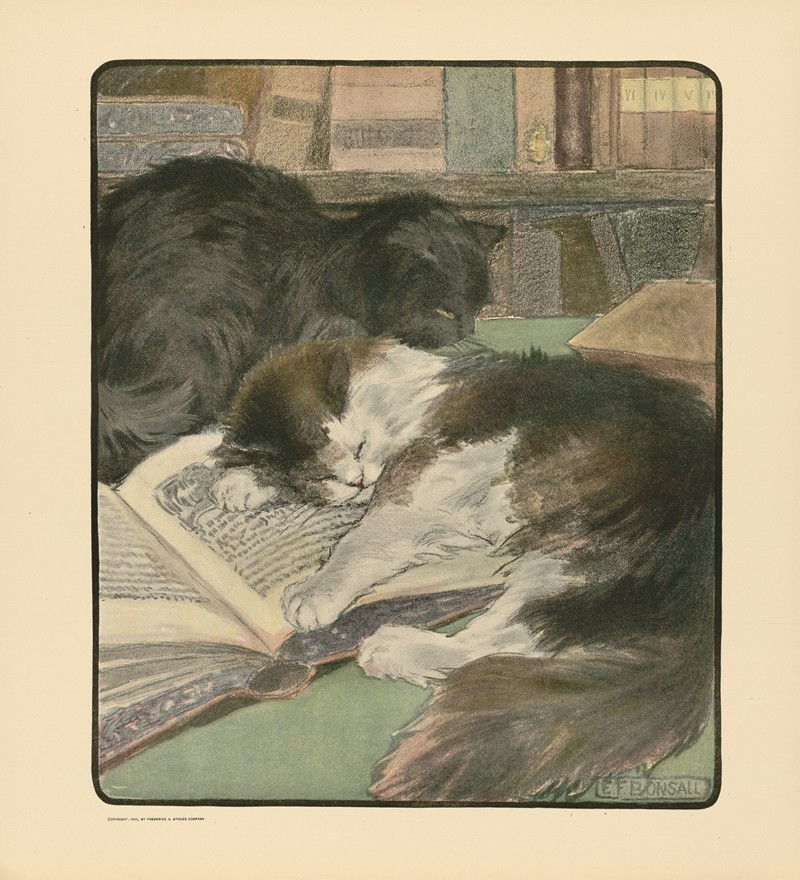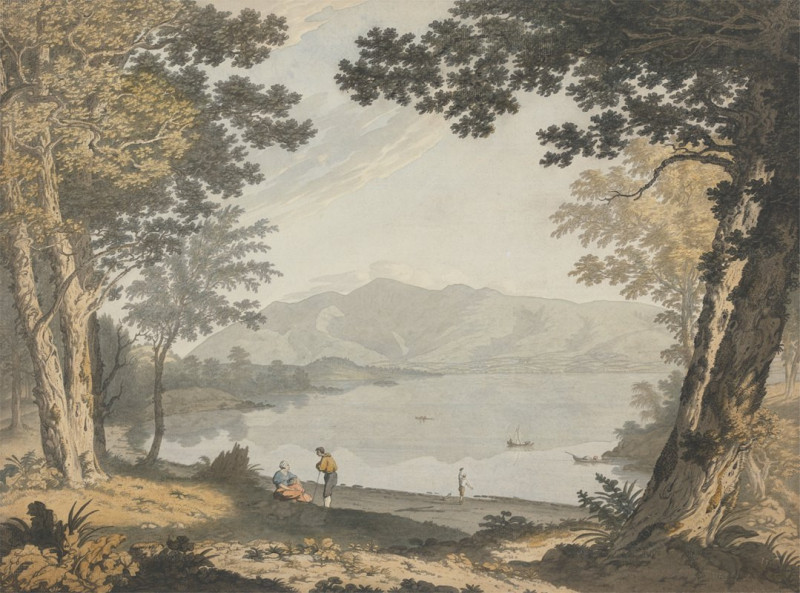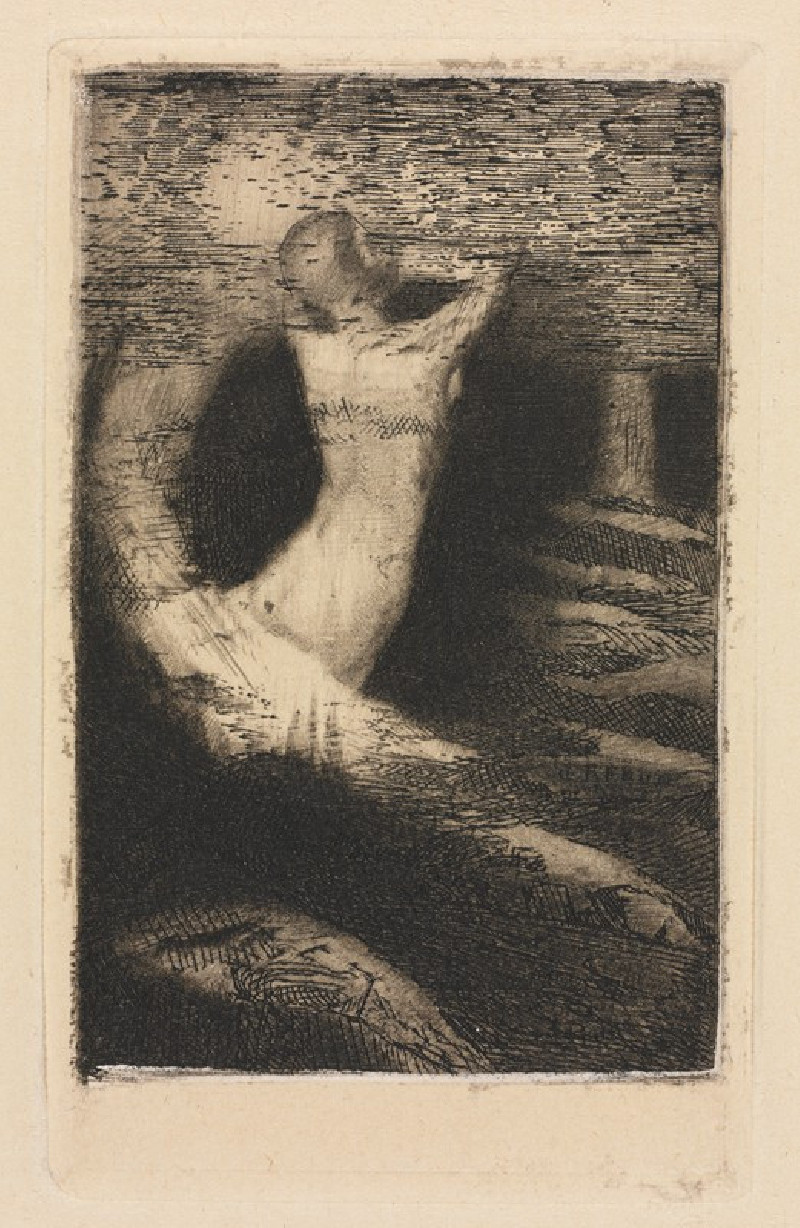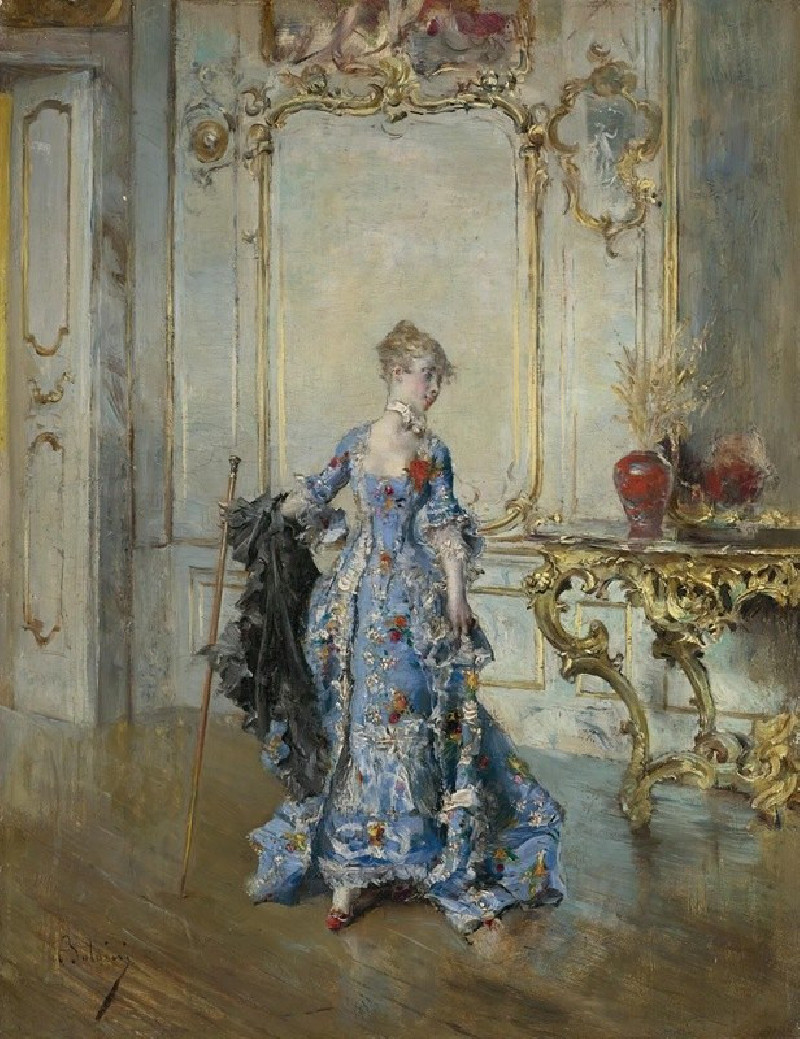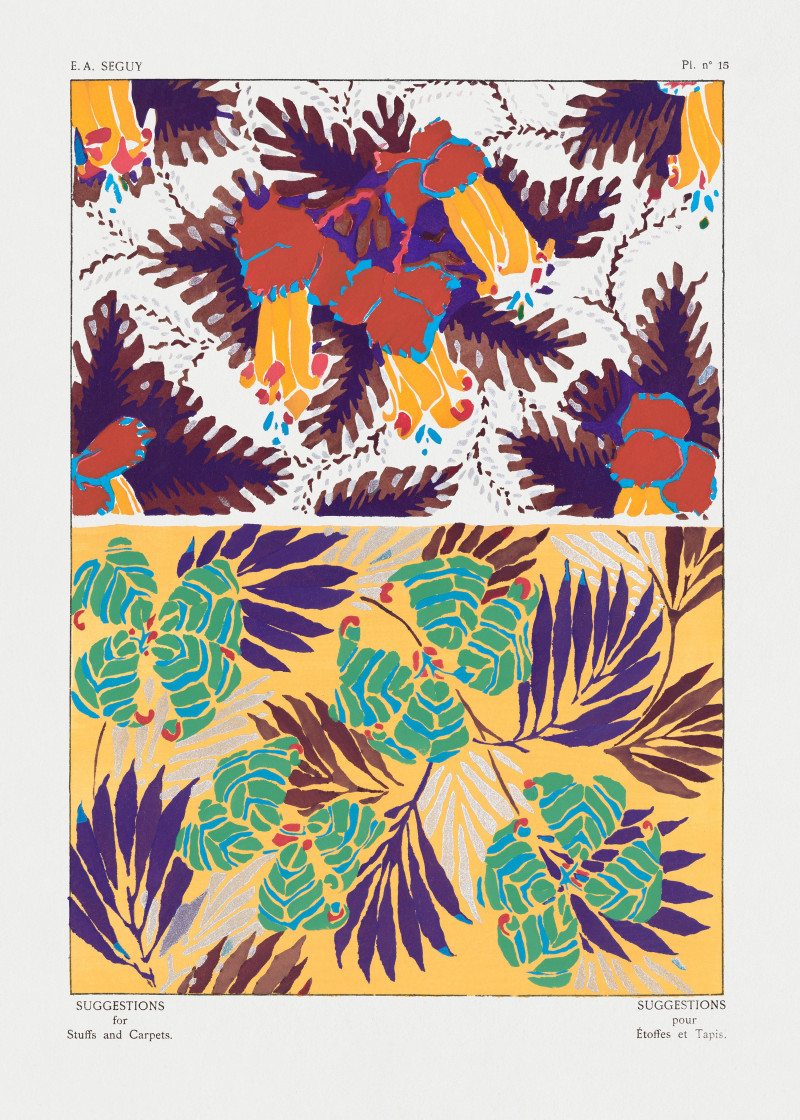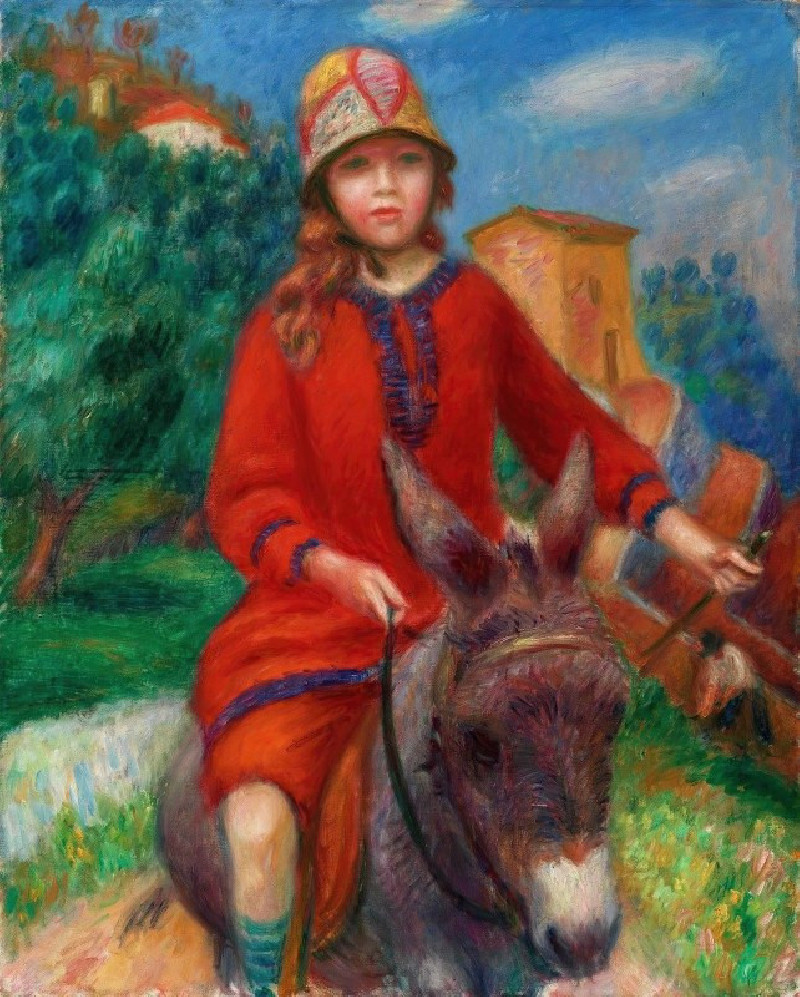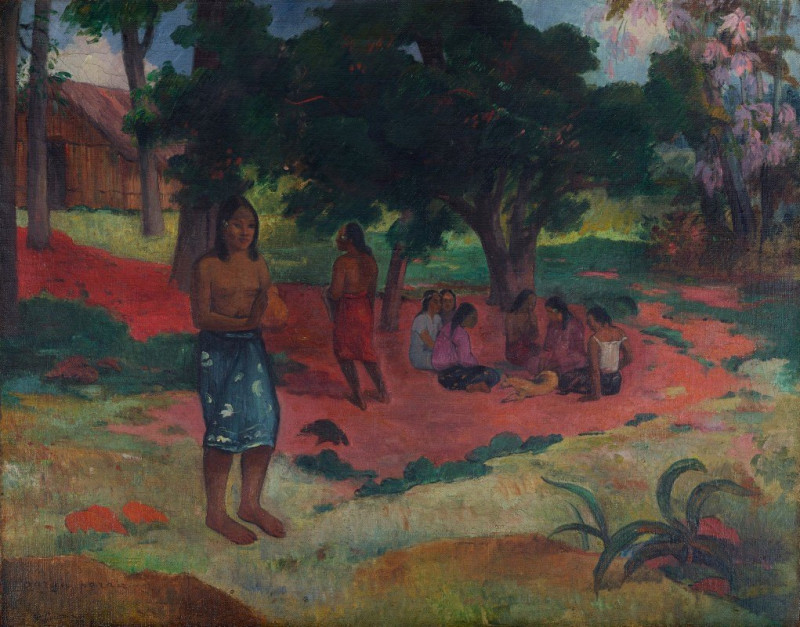Examples of Chinese ornament, Pl.51 (1867)
Technique: Giclée quality print
Recommended by our customers
More about this artwork
Welcome to an exploration of "Examples of Chinese Ornament, Pl.51" by Owen Jones, created in 1867. This remarkable work is a beautifully intricate example of Victorian fascination with non-Western designs, reflecting the period's broader interest in the aesthetics of the East.The painting features a dazzling array of motifs, predominantly floral, that float gracefully over a rich golden background. Its composition is symmetrical and harmonious, filled with a variety of blooming flowers including peonies and chrysanthemums, which are highly regarded in Chinese culture for their associative meanings with prosperity, beauty, and peace.Above the main field of the pattern, you can observe a distinct band that presents a denser, more structured arrangement. This band showcases smaller, meticulously aligned floral forms and traditional Chinese elements, framed by wave-like patterns along its edges, enhancing the depth and texture of the overall design.Owen Jones, known for his studies in ornamental arts and his influential book "The Grammar of Ornament," demonstrates his mastery in adapting traditional Chinese motifs into a format that appealed to Victorian tastes. This painting not only illustrates his skill and sensitivity as a designer but also serves as a cultural bridge, inviting viewers to appreciate the aesthetic values shared across diverse cultures.Today, this painting stands as a testament to the historical exchange of artistic ideas and continues to enchant viewers with its timeless beauty and intricate craftsmanship. Whether you are an enthusiast of historical artwork, a lover of intricate patterns, or someone fascinated by cultural intersections in art, "Examples of Chinese Ornament, Pl.
Delivery
Returns
Owen Jones was an English-born Welsh architect. A versatile architect and designer, he was also one of the most influential design theorists of the nineteenth century. He helped pioneer modern colour theory, and his theories on flat patterning and ornament still resonate with contemporary designers today.


